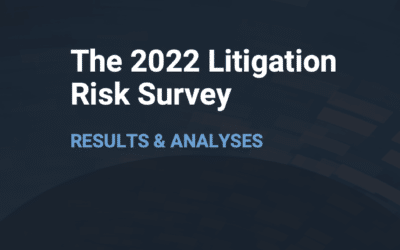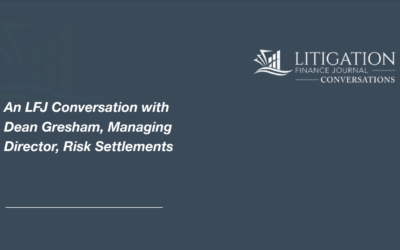Class action lawsuits are usually resolved with one of two settlement structures: common-fund settlements or claims-made settlements. A simple way to think about the difference between the two is that the former is for a fixed amount while the cost of the latter is variable.
Common-fund Settlements
In a common-fund settlement, the defendant agrees to the total cost of the settlement it will pay, i.e., the “common fund,” the pool of money from which all settlement expenses are deducted. These expenses generally include valid claims, plaintiffs’ attorneys’ fees and expenses, class representative incentive awards and settlement administration costs. While the amount each claimant receives is based on how many claimants file valid claims, the overall amount paid by the defendant is set on day one.
Claims-made Settlements
In a claims-made settlement, however, the defendant’s total bill is based in part on how many claimants file a valid claim. This type of settlement is prevalent in situations where the defendant lacks data on how many members may be in the particular class (e.g., consumer product class actions). This allows for class members to be able to recover their fair share, even though the number of class members isn’t a known quantity when the parties are structuring their settlement. It also ensures that each claimant receives a benefit amount that all parties agree is fair and on which the court has signed off, whereas common fund settlements can sometimes result in claimants receiving a windfall (when only a small number of claimants submit valid claims).
Risks and Rewards of Claims-made Settlements
A claims-made settlement’s variable structure presents both potential risks and rewards to a defendant. On the one hand, if the number of valid claims made is low, then a claims-made settlement can ultimately cost a defendant less than it would otherwise have paid. On the other hand, and perhaps more importantly, if a claims-made settlement goes viral, leading to a tsunami of claims, the defendant can end up paying an astronomical amount, especially if the settlement is uncapped.
Over the past two years, claims-made settlements have become increasingly more common, with parties implementing and courts approving novel structures. Following are three examples of uncapped, claims-made settlements that have recently garnered court approval.
Novel Settlements
In Cleveland v. Whirlpool Corp., Elisabeth Cleveland sued Whirlpool Corporation for selling allegedly leaky dishwashers. In June 2022, the court granted final approval to an uncapped, claims-made settlement that created different award tiers based on the age of each claimant’s dishwasher: for each year after the unit’s manufacturing date, the award decreased slightly. For dishwashers one or two years after manufacture, plaintiffs were eligible to receive $225, the average cost of repair, while owners of dishwashers as old as seven years could receive $67.50. Cash rebates were offered for those who opted for new appliances instead. The settlement class consisted of approximately 6.7 million class members. Plaintiffs’ damages expert estimated that the value of the settlement would be between $15,705,328 and $21,327,800, depending on the claims rate (the ratio of how many people submit claims for payments/rebates divided by 6.7 million). In granting final approval, the court approved plaintiff’s counsel’s request for approximately $1.5 million in attorneys’ fees.
In Kaupelis v. Harbor Freight Tools USA, Inc., purchasers of Harbor Freight Tools’ chainsaws sued over an allegedly defective power switch. There were approximately 800,000 class members nationwide. According to the court-approved, uncapped, claims-made settlement, class members who either still had their chainsaws or had proof of purchase were entitled to a $50 reward, while class members with no proof of purchase were entitled to $10 cash or a $25 Harbor Freight gift card. The parties estimated that the potential total value of the settlement would be between $8 million and $40 million, depending on how many class members filed claims. At the final approval hearing, the court approved the settlement and plaintiffs’ counsel’s request for approximately $650k in attorneys’ fees and expenses.
Finally, in Broomfield v. Craft Brew Alliance, Inc., several beer drinkers sued the Craft Brew Alliance for misrepresenting that one of its beer brands, Kona, was brewed in Hawaii when, allegedly, it was brewed in the continental United States. The class consisted of approximately 7.8 million Kona beer purchasers. In the claims-made settlement resulting from the litigation, purchasers without proof of purchase were eligible for up to $10, while purchasers with proof were eligible for up to $20. The settlement amount was uncapped, but the settlement agreement provided that CBA had the unconditional right to terminate the Settlement Agreement if more than one million claims were filed, effectively giving CBA an optional $20 million damages cap. At the conclusion of the claims period, the class did not reach the one million claim threshold. After the final approval hearing, the court approved the settlement and awarded plaintiffs’ counsel approximately $2.26 million, slightly less than plaintiffs’ counsel’s request for $2.57 million.
What if there was a way to structure a claims-made settlement that allowed a defendant to avoid the top-end variability risk, especially in the instance of an uncapped, claims-made structure?
Class action settlement insurance (CASI) is a risk transfer solution that jettisons the uncertainty clouding the resolution of class actions, whether the cause(s) of action is fraud, mislabeling, products liability, statutory claims like the TCPA, FLSA, BIPA, or something else. A defending company can only exert so much influence over the outcome of litigation. Not knowing how the cards will fall can be crippling in and of itself.
CASI shifts the entirety of the risk from the defendant business to the insurer and provides settlement cost certainty. It also eliminates internal friction associated with pending class actions, like diversion from core business operations, financial planning dilemmas, and opportunity cost.
A defendant in the throes of class action litigation receives a confidential, no-obligation, tailor-made analysis concerning the financial risk arising from settlement. The analysis uses proprietary risk algorithms and the nation’s most robust class action litigation database to assess the settlement value against the actual cost of resolution.
In return for a fixed premium, a defendant with CASI receives indemnification of 100% of the payment risk to the class under the settlement terms.
Unknowns can mire companies facing class-action lawsuits, from cost uncertainty to possible violations of loan covenants and earnings hits. The ripple effects detract from business goals and can even derail M&A transactions and impact efforts to raise capital. A defendant with CASI sheds that uncertainty. With CASI, companies are empowered to mitigate, control, and shift the financial risk of settlement in class action litigation.
Class actions present a multitude of risks to corporate defendants, and important decisions such as settlement structures and applicable insurance products can greatly impact how well a company navigates these potentially dangerous waters. Understanding and exploring all the modern options, such as CASI, at a company’s disposal is essential for any sophisticated business.
Reprinted with permission from the February 28, 2023 issue of Law.com Daily Business Review. © ALM Media Properties, LLC. Further duplication without permission is prohibited. All rights reserved.







